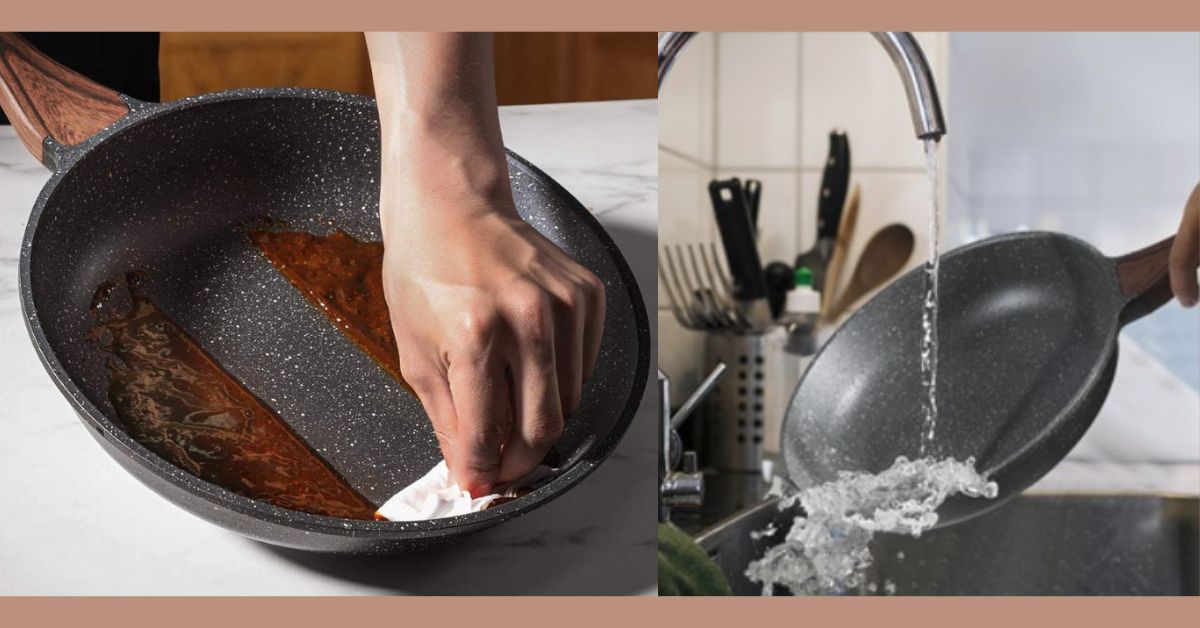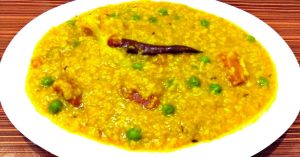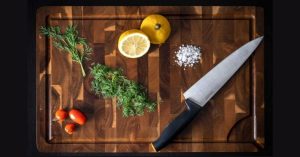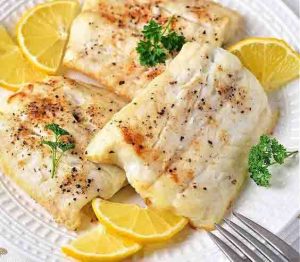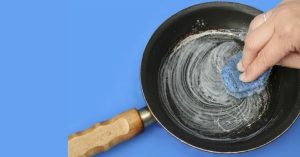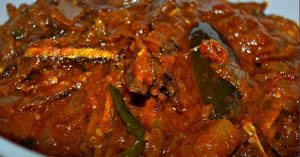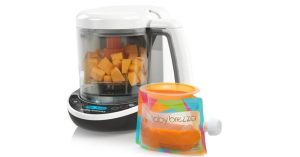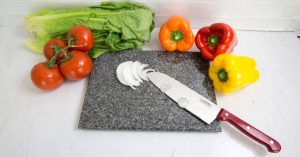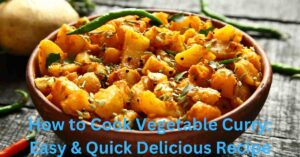A nonstick pan is an essential kitchen tool used by home cooks. The pan is perfect for cooking delicious foods like fish, eggs, and pancakes and for sautéing vegetables and meats without sticking. However, like any other cookware, a nonstick pan needs to season properly, ensuring longevity and optimal performance for cooking. Seasoning a non stick pan involves coating its surface with oil or fat and heating it to create a natural nonstick layer that helps prevent food from sticking. In this response, we’ll write about how to season a nonstick pan effectively and maintain its nonstick properties for long years to come.
Table of Contents
What is a Nonstick Pan?
A nonstick pan is a type of cookware with a special coating on its surface that prevents food from sticking. The coating is usually made of a synthetic polymer that is said to be polytetrafluoroethylene (PTFE), and it is commonly known as Teflon. Nonstick pans are available in the market in various sizes and shapes, and it is made in different materials such as aluminium, stainless steel, or cast iron. Nonstick pans are popular in home kitchens for convenience and ease of use. If proper care and maintenance, did they ensure their longevity and continue nonstick properties for cooking?
Can you season non stick pans?
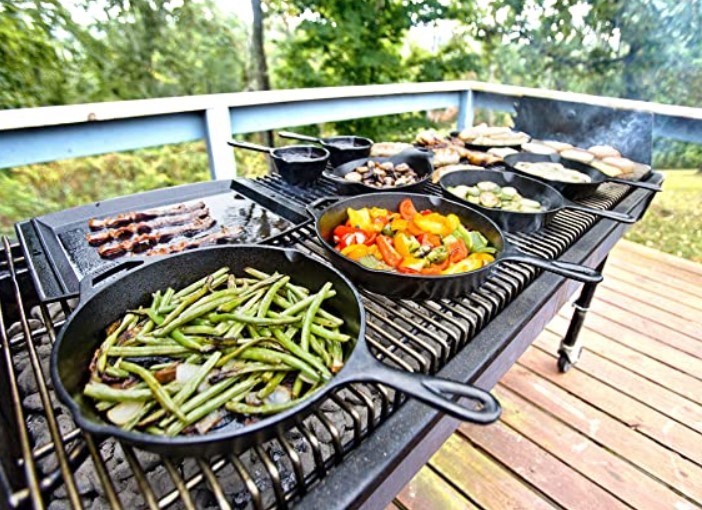
Yes, you can season nonstick pans, but seasoning the same way as cast iron or carbon steel pans is needed. Unlike those pans, nonstick pans come with a factory-applied coating that makes them naturally nonstick. However, seasoning a nonstick pan can help to maintain its nonstick properties and prevent food from sticking to the surface.
If you want to season a nonstick pan, coat the surface lightly with cooking oil and then heat it on the stovetop or in the oven. The process helps create a thin layer of seasoning and fills in any microscopic imperfections on the pan’s surface, creating an even smoother and more nonstick surface.
However, it’s important to note that you should only season a nonstick pan if the manufacturer recommends it because some nonstick coatings can be damaged by high heat or certain types of oils. It’s also essential to follow the non stick pan care and manufacturer’s guideline carefully to avoid damaging the pan or compromising its nonstick properties.
Why I need to season nonstick pan
Season non stick pan can help the nonstick pan properties and prevent food from sticking to the surface. In addition, the nonstick coating on a pan can wear down or become scratched, which can cause food to stick to the surface and make it more challenging to clean, so you need to season a new non stick pan before use. Seasoning a nonstick pan helps create a thin layer of oil that, if you like to see, you can see any microscopic imperfections on the pan’s surface. Additionally, the seasoning pan creates a smoother and more nonstick surface. It can help to extend the life of the pan and prevent the need for frequent replacement. However, it’s important to note that not all nonstick pans need season.
New non stick pan before use
How to season a nonstick pan? Before using a new nonstick pan, it’s essential to wash it properly to remove any dust or debris that accumulated during manufacturing or shipping. Here are the steps you can follow
When unpacking the nonstick pan, remove any labels or packaging from the pan.
Then you need to wash the pan with warm, soapy water and a soft sponge or cloth, and you need to keep in mind to avoid using abrasive sponges or cleaners that can scratch the surface of the best non stick frying pan.
When washing the wash completely, rinse the pan thoroughly with clean water and dry it with a soft towel.
If the manufacturer recommends seasoning your new buy frying pan, follow their instructions carefully. Some nonstick pans come pre-seasoned, while others may require seasoning before their first use. If you’re unsure whether your pan needs to be seasoned, check the manufacturer’s instructions or contact customer service for guidance.
If you’re not seasoning the pan, you can use it immediately. However, it’s a good idea to read the manufacturer’s instructions properly for care and use and any tips or recommendations they provide for getting the most out of your best nonstick pan.
Do I Need to Season My Nonstick Frying Pan Before I Use It?
Generally, you do not need to season a nonstick frying pan before using it, as nonstick pans typically come with a factory-applied coating that makes them naturally nonstick. However, some manufacturers recommend seasoning their nonstick pans before the first use or periodically to maintain their nonstick properties.
How to Season a Nonstick Pan?
We know that all nonstick pans do not need to season. Still, some manufacturers recommend seasoning their nonstick pans before the first use or periodically to maintain their nonstick properties. Here are the general tips to follow for seasoning a nonstick pan:
When unboxing your new buy nonstick frying pan, wash the pan with warm, soapy water and a soft sponge or cloth to remove any dust or debris. When these steps are complete, rinse the pan thoroughly with clean water and dry it with a soft towel.
Start to preheat your oven to 350°F (175°C).
Then lightly coat the surface of the nonstick pan with a high-smoke-point oil, such as vegetable, canola, or grapeseed oil. Use a paper towel or brush to spread the oil evenly over the pan’s surface, including the sides and handle.
Place the non stick pan upside down on the middle rack of your preheated oven, and then place a sheet of aluminium foil or a baking sheet on the bottom rack to catch any drips of the pan.
Bake the pan for 30 minutes, then turn off the oven and let the pan cool inside for at least 1 hour.
You must remove the pan from the oven and wipe any excess oil with a paper towel or clean cloth.
Your nonstick pan season ready to use. Finally, before using a pan, read the manufacturer’s instructions for care and use and any tips or recommendations that help you get more information about your best frying pan.
How often to season non-stick pan?
The frequency with which you should season your nonstick pan will depend on the manufacturer’s recommendations and how often you use the nonstick pan. If your nonstick pan has a factory-applied coating, you may not need to season it.
If your nonstick pan does require seasoning, you may want to do it every few months or as often as the manufacturer recommends. Therefore you use the pan frequently or notice that food is starting to stick to the surface, you may need to re-season the pan. But you should carefully follow the manufacturer’s instructions when seasoning your nonstick pan. Too often, using the wrong oil or seasoning can damage the coating and compromise its nonstick properties.
Can you season a non-stick pan with olive oil?
It’s generally not that we do not recommend seasoning a nonstick pan with olive oil because olive oil has a low smoke point and can leave a sticky residue on the pan’s surface. When you heat past its smoke point, olive oil can break down and release free radicals that can damage the nonstick coating and affect its nonstick surface.
Instead of using olive oil, it is best to use high smoke points, such as vegetable, canola, or grapeseed oil, to season a nonstick pan, and you can now clear how to treat non stick pans.
Can you season a Teflon pan?
Teflon is a brand name for a type of nonstick coating, so the answer to whether you can season a Teflon pan depends on the specific instructions and recommendations from the manufacturer. Some Teflon-coated pans are designed to use without seasoning, while others benefit from seasoning to enhance their nonstick properties.
Generally, if the manufacturer recommends seasoning the Teflon pan, it’s best to read and follow their instructions carefully. You also ensure to use the recommended oil type and avoid high heat, which can damage the nonstick coating. It’s also important to avoid using metal utensils or abrasive cleaners, which can scratch or damage the coating and affect its nonstick surface. Complete guidelines for how to season a Teflon pan.
How to Clean and Care for Your Nonstick Frying Pan?
Proper cleaning and care are essential for maintaining the nonstick properties of your frying pan and prolonging its lifespan. Here are some tips on how to clean and care for your nonstick frying pan:
Let the pan cool down before cleaning: To avoid warping or damaging the nonstick coating; the nonstick pan needs to cool down before cleaning.
Hand wash with mild detergent: You should use hand wash and mild detergent with a soft sponge or cloth to clean your nonstick frying pan. It is essential to avoid using abrasive cleaners, metal scrubbers, or harsh chemicals because they are liable for scratches or damage to the nonstick coating.
Do not soak: You do not soak the pan in water for an extended period, as it will damage the nonstick coating, so you must be careful.
Use a non-abrasive sponge: Use a non-abrasive sponge or brush to clean the pan’s surface gently, and do not use metal utensils or sharp objects to avoid scratching or damaging the nonstick coating.
Dry thoroughly: After washing, dry the pan thoroughly with a soft towel to prevent water spots or rust.
Store properly: When the pan is washing correctly, you need to store the pan in a dry and cool place to prevent moisture and humidity from damaging the nonstick coating.
Use proper cooking tools: To get better results for your non stick pan, use non-metal utensils, such as silicone or wooden, to avoid scratching or damaging the nonstick coating.
Avoid high heating: You should avoid high heating on your nonstick pan as it will damage the nonstick coating. Instead, use the medium to low heat for best results.
Following these tips, you can keep your nonstick frying pan in good condition and maintain its nonstick properties for longer. I think you are now available to get your answer on how to season a nonstick pan and get ideas for how to care nonstick pan.
Washing non stick pans while hot?
Washing nonstick pans while still hot is generally not recommended, as this can cause the nonstick coating to warp or become damaged.
When heated, the metal in the pan expands, and if it comes into contact with cool water, it can contract and cause the pan to warp. Additionally, hot water can cause the nonstick coating to break down and become less effective.
What are the benefits of cooking with a non-stick pan?
There are several benefits of cooking on a nonstick pan, including:
Easy to clean: Nonstick pan design prevents food from sticking to the surface, which makes ensure to easier to clean than traditional pans. It is save time and effort in the kitchen.
Healthier Cooking: Nonstick pans do not need access oil for cooling, preventing food from sticking. They can help reduce the amount of fat in your cooking. It leads to healthier meals.
Versatility use: Nonstick pans can be used for various cooking tasks, from frying eggs to sautéing vegetables to making pancakes, and it is a versatile tool in the kitchen.
Even heating: Nonstick pans are openly made in materials that distribute heat evenly across the surface and ensure the food cooks evenly and prevent hot spots.
Durability: Many nonstick pans make from durable materials that can last for years with proper care, and it is a cost-effective investment in your kitchen.
Conclusion:
In conclusion, of how to season a nonstick pan, you now avail to season a non stick pan and get the answer of season non stick pan with olive oil. You also know how to use nonstick and many more question answers. Following this instruction, you can use your nonstick long-time and healthiest way.
Recent Posts You May Like:
- How to Cook Khichuri Easy Way at Home
- What is the Best Wood for an End Grain Cutting Board?
- How Long to Cook Frozen Fish Fillets In an Air Fryer Perfectly
- How to Clean Non Stick Pans with Burnt on?
- How to Cook Dry Fish Curry at Home
- How to Use Baby Brezza Food Maker
- How to Cleaning Cuisinart Coffee Grinder?
- Instant Pot Air Fryer Lid Recipes Chicken Wings
- Granite Cutting Board Pros and Cons and Buying Guideline
- Dutch Oven Recipes for Chicken – Yummy Food
- How to Cook Vegetable Curry an Easy Recipe
- What Type of Cookware Should be Used on a Glass Cooktop?
